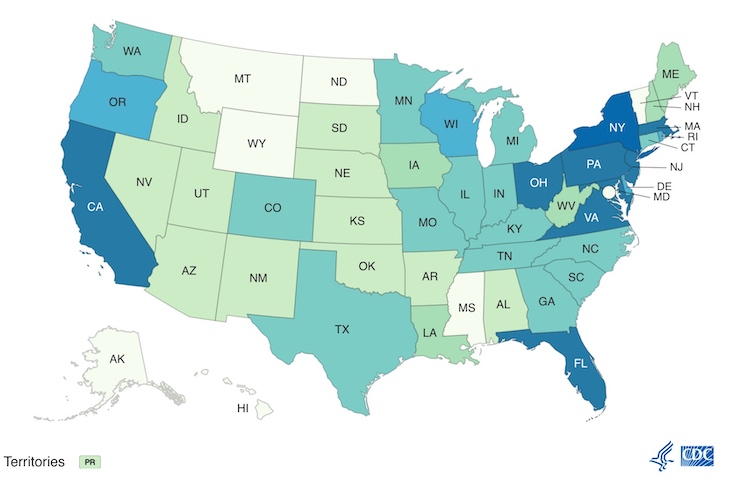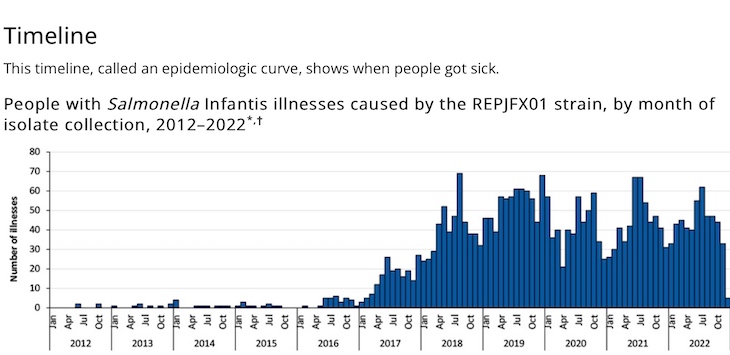A persistent Salmonella strain in chicken has sickened Americans for a decade, according to the Centers For Disease Control and Prevention (CDC). The strain is Salmonella Infantis (REPJFX01). This strain is resistant to multiple drugs and has caused outbreaks and illnesses in the United States and globally.

The map is interactive on the CDC site. You can select a year and see how many people were sickened and where they live.
These illnesses were first reported to PulseNet in 2012. As of December 31, 2022, information from 2,900 patients with REPJFX01 infection was reported. Illnesses caused by this strain occur all year long but are most common in the months of July and August. In all, seven outbreaks were investigated during the years of 2012 to 2022, but most were not solved and none were linked to a specific brand or producer.
The largest outbreak, in 2019, sickened at least 130 people in 33 states., The second largest, in 2017, sickened at least 58 people in 20 states. In the 2019 outbreak, many types of raw chicken products from a “variety of sources” were contaminated with the bacteria and made people sick. The outbreak strain was found in samples from raw chicken products, raw chicken pet food, and live chickens. A single common supplier of raw chicken products or of live chickens was not identified.
Lab confirmed cases are only a small portion of the true number of illnesses, whether in a confirmed outbreak or not. Many people do not see a doctor and even fewer submit a stool sample to be tested.
The timeline, or epidemiological curve, the CDC provided shows that the number of illnesses increased dramatically starting in the year 2017.

Most of the isolates are from chicken samples collected by the USDA. But there are other sources of bacteria sequences reported to PulseNet that were from turkey, pork, beef, water, other food, and environmental sources.
And this pathogen is resistant to multiple antibiotics, including several that are first line treatments. They include ampicillin, ceftriaxone, ciprofloxacin, and trimethoprim-sulfamethoxazole.
It is legal to sell poultry contaminated by this pathogen in this country. And this is a good reminder to handle chicken with care, avoid cross-contamination, cook chicken to a final internal temperature of 165°F, and wash everything that touched raw chicken or its juices thoroughly with soap and water.




